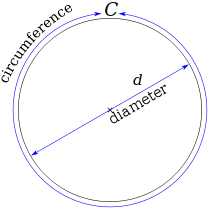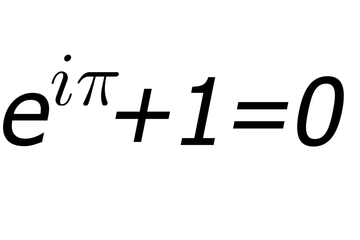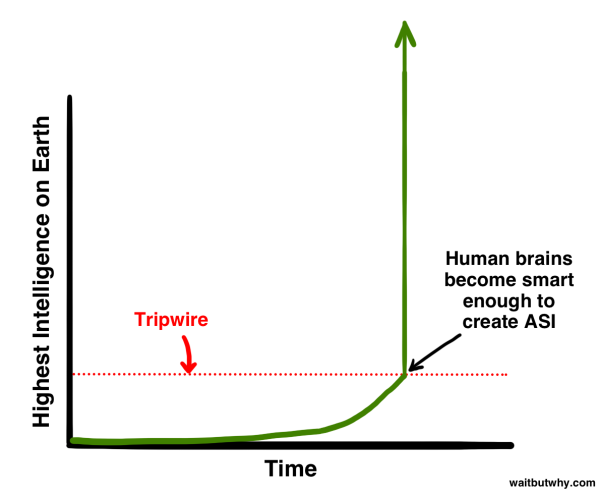Mar 15 2016
Did you get the sauna rocks? 300 Krona for sauna rocks?
300 Krona for sauna rocks?
Tell them they’re dreaming.
Good times in Sweden.
Hej hej Kenny and Alex

Mar 15 2016
Did you get the sauna rocks? 300 Krona for sauna rocks?
300 Krona for sauna rocks?
Tell them they’re dreaming.
Good times in Sweden.
Hej hej Kenny and Alex


March 14th in Pi Day, so declared by the US Congress in 2009.
(March 14th is 14/3 for us, but 3.14 for our American friends)

The circumference of a circle is slightly more than three times as long as its diameter. The exact ratio is called π.
π – the ratio of the circumference of a circle to its diameter – is a mathematician’s favourite number. It is both irrational and transcendental – it will continue infinitely without repetition or pattern.
As you know, π is just over 3, and is often approximated as 22 divided by 7, or 22/7 (so in Australia we should celebrate Pi day on 22nd July!)
To be more accurate, π is 3.14159
(Last year was a very special Pi day – 3.14.15 . This year – 3.14.16 – might be said to be rounded Pi day)
To be even more accurate, Pi has been calculated to over one trillion digits beyond its decimal point. What larks!
The ratio of a circle’s circumference to its diameter was known to be about 3 since ancient times (as mentioned in the Bible). Archimedes in ancient Greece proved it to be 22/7.
However, the use of the symbol π (for perimeter) to represent this ratio was not used until 1706, and was popularised by the prolific Swiss mathematician Euler later that century.
 Speaking of Euler, the peak of our mathematical education at school was the day Mr Garrity showed us the proof of the world’s most beautiful equation. He was bursting with delight as he worked through the steps that reveal the relationship between the 5 most important constants in all of mathematics. Euler’s Identity – “more beautiful than a Shakespeare sonnet”.
Speaking of Euler, the peak of our mathematical education at school was the day Mr Garrity showed us the proof of the world’s most beautiful equation. He was bursting with delight as he worked through the steps that reveal the relationship between the 5 most important constants in all of mathematics. Euler’s Identity – “more beautiful than a Shakespeare sonnet”.
 π has featured in the Simpsons – so much so that mathematician Simon Singh has written a book on the subject.
π has featured in the Simpsons – so much so that mathematician Simon Singh has written a book on the subject.
Happy Rounded Pi Day!
Also – Happy 137th birthday Albert Einstein.

 The 2500 year old game of Go has simple rules but profound complexity. Success requires masterful intuition and advanced pattern recognition skills. Masters of the game study since childhood. It is considered a much more complex challenge for computer scientists than chess.
The 2500 year old game of Go has simple rules but profound complexity. Success requires masterful intuition and advanced pattern recognition skills. Masters of the game study since childhood. It is considered a much more complex challenge for computer scientists than chess.
So it was a surprise to many this morning when the computer ‘AlphaGo’ defeated international champion Lee Se-Dol for the third time, winning a best of five tournament 3-0.
No-one was more taken aback than Lee, especially since he missed out on $1 million in prize money.
“I was very surprised,” says Lee. “I didn’t expect to lose. I didn’t think AlphaGo would play the game in such a perfect manner.”
AlphaGo made no comment. In fact it appeared disinterested in its astounding victory.
AlphaGo was developed by the British company DeepMind, which was acquired by Google 2 years ago.
The DeepMind team started out by training AlphaGo on 30 million expert moves. They then set it to work playing millions and millions of games against itself – tweaking and improving its judgement about the relative value of positions and moves each time.
As it gets more experience, it is getting better and better. Having taught itself to improve, it is now a much better player than the humans who created it. This is considered a big deal in AI circles.

Machines have now beaten humans in Chess, Jeopardy, Go and in the ultimate challenge – Donkey Kong.
Should we be celebrating the rise and rise of Artificial Intelligence?
Maybe not. Or at least not without some reservations.
Stephen Hawking says
“The development of full artificial intelligence could spell the end of the human race.”
Bill Gates says
“I am in the camp that is concerned about super intelligence … I don’t understand why some people are not concerned.”
Elon Musk says
“I think we should be very careful about artificial intelligence. If I were to guess like what our biggest existential threat is, it’s probably that…. With artificial intelligence we are summoning the demon.”
If these three are concerned, perhaps we should be paying attention.
Our favourite blogger Tim Urban has done an exhaustive two part piece on Artificial Intelligence in his blog ‘Wait But Why’.
In the article, he classifies AI into three types
Artificial Narrow Intelligence, or ANI, is AI that specialises in a narrow task – like playing Go, or driving a car, or being Siri. As demonstrated again today by AlphaGo, machines can already perform many tasks better than humans.
Artificial General Intelligence, or AGI, refers to AI that’s at least as intellectually capable as a human, across the board. This is many orders of magnitude more complicated than narrow or task specific intelligence. It implies a great understanding of the physical and social world, a knowledge of world history, insight into the psychology of people, a deep grasp of context, and an ability to learn.
A machine with AGI would pass what is known as the Turing Test. In this test, a computer would participate in a conversation so convincingly that a human would not be able to tell if he or she were conversing with a man or machine. (Turing called this ‘The Imitation Game’)
Artificial General Intelligence is still many years away. However, with increases in computing power and ready access to the huge knowledge base that is the internet, most experts believe AGI will be achieved some time this century (Probably around 2040, but some believe as early as 2022)
What is Artificial Super Intelligence (ASI)? Oxford philosopher and leading AI thinker Nick Bostrom defines superintelligence as “an intellect that is much smarter than the best human brains in practically every field, including scientific creativity, general wisdom and social skills.”
A learning machine that achieves human-like intelligence (AGI) will be a great milestone. It will then be able to develop new ways of increasing its own computing capacity and new ways of learning that we humans hadn’t thought of. Just as AlphaGo started off as a fairly average Go player and taught itself to become the best player in the world, AGI may start off at Forrest Gump level, but very quickly , as it continues to learn, it will reach Albert Einstein level. Immediately after that it will be more intelligent than any human ever.
The path from human-like intelligence to super intelligence will be exponential. Some futurists believe that the time frame will be very very short. Some believe we will see progression from General Intelligence to Super Intelligence in a period of days to months!

The character played by Matt Damon in Good Will Hunting could intuitively solve mathematical problems that the greatest professors of mathematics had struggled with for years.

“Do you know how easy this is for me? Do you have any idea how easy this is? This is a joke. And I’m sorry you can’t do this. I really am because I wouldn’t have to sit here and watch you fumble around and stuff it up.” (multiple expletives deleted)
This is what superintelligence will be like when compared to us. But much more so.
It is envisaged that Artificial Superintelligence will solve major scientific questions such as the Universal Theory of Everything. It will find a cure for cancer. It will develop new agricultural and industrial techniques that will increase productivity and feed the world.
Stephen Hawkins, Bill Gates and Elon Musk have all made significant contributions to the development of Artificial Intelligence. They are among 150 scientists who have recently posted an open letter supporting AI research and expounding its benefits.
But they are also amongst those who are very concerned that perhaps in developing Artificial Intelligence we ‘are summoning the demon’.
They warn that with great intelligence comes great power.
A machine that is much much more intelligent than mankind will be much much more powerful than we are. AlphaGo doesn’t really care whether it beats Lee Se-Dol. Our future super intelligent machine may not really care about our future. Inadvertently, or ‘adverdently’, depending upon the motives of the individuals or organisation that first develops a super intelligent machine, the changes made by such a machine may lead to our extinction, just as our own development has lead to the extinction of many ‘less-intelligent’ animal species.
As Prof Weirdo found when creating Milton the monster, it is vital to get the recipe just right.
Six Drops of the essence of terror,
Five drops of sinister sauce
When the stirrings done may I lick the spoon?
Of course, ha ha, of course.
Now fir the tincture of tenderness, But I must use only a touch
For without a touch of tenderness, he might destroy me
Whoops – too much!
Tim Urban writes that there is no way to know what Artificial Super Intelligence will do or what the consequences will be for us. Will we be able to add enough of the tincture of tenderness?
Will AI lead to our immortality or to our extinction?
When the answer to a difficult problems is not clear, I find it is always good practice to give the final word to the Flight of the Conchords.

Mar 10 2016
Book Club Cheat SheetPerhaps you could take the angst out of this meeting by using this Book Club Cheat Sheet from the University of Southern Californis.
Brought to you by USC Rossier’s masters of art in teaching

 Kodachrome
Kodachrome
They give us those nice bright colors
They give us the greens of summers
Makes you think all the world’s a sunny day
I got a Nikon camera
I love to take a photograph
So mama don’t take my Kodachrome away
Paul Simon, Kodachrome 1973
The colour film Kodachrome was a sensation when it was introduced by Eastman Kodak in 1935.
For the next 74 years, it was used to shoot the world’s most iconic photographs and movies. It is said to be “the best film ever made’ because of it “rich true colour” and “legendary durability”.
However, by 2009 digital photography had completely overtaken the market. Film photography was in such decline that Kodak announced it was discontinuing the poduction and processing of Kodachrome.
 National geographic photographer, Steve McCurry, had a Nikon camera and loved to take a photograph.
National geographic photographer, Steve McCurry, had a Nikon camera and loved to take a photograph.
He wanted to write the last chapter in the book about his favourite film – a film which he says produces “the best rendition of reality”. He has a portfolio of more than 800,000 photographs, including the famous ‘green eyed’ afghan girl that became emblematic of the plight of women refugees.
Kodak agreed to his request, and the last roll of Kodachrome to come off the production line in Rochester was delivered to McCurry in Ney York.
There are 36 shots on one roll of film. What would he shoot? Where would he shoot? and who would he shoot?
McCurry’s decisions are outlined in a 25min National Geographic short film. It gives an excellent insight into how a photographer sees the world. No instant gratification when using film – Steve can’t see any of the shots till he has taken them all.
When he was finished, in July 2010, there only one place left in the world where you could get your Kodachrome developed – Dwayne’s Photo in Parsons, Kansas. Even Dayne ran out of the required chemicals soon after.
You can watch the film here, but if you want to cut to the chase, you can see (most) of the 36 photographs on Steve McCurry’s website.
Hat tip to my Teacher of the Day – Millie.